16 Types of Oak Trees in Florida (with Pictures)
-
Rachel Giordano
- Last updated:
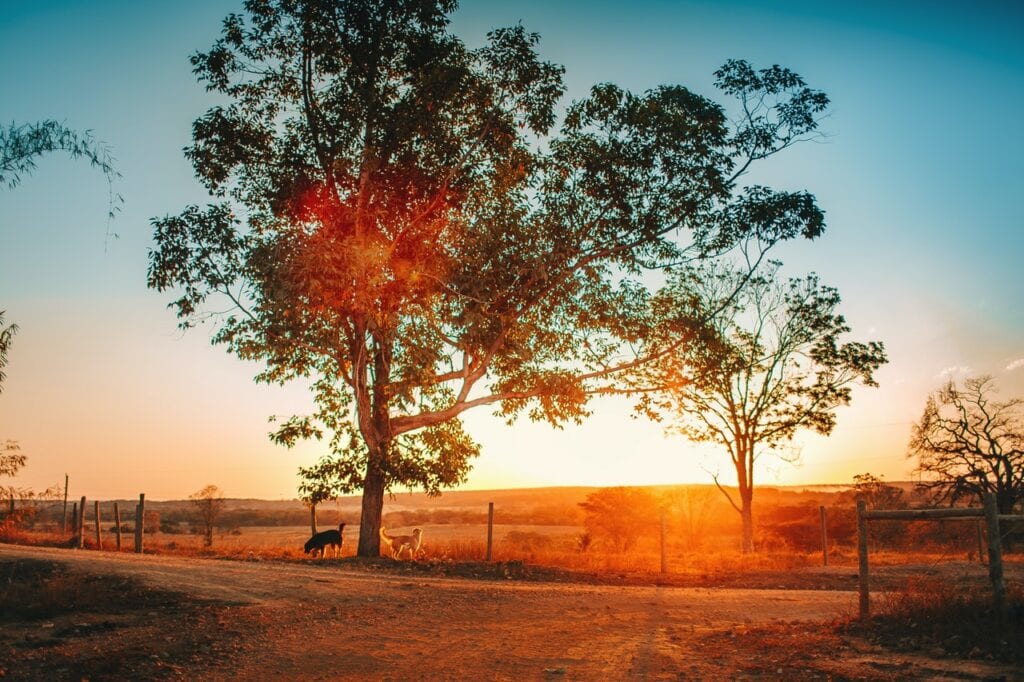
When you are in the state of Florida, you’ll notice its oak trees. Some line the streets of Florida as if on guard, and their beauty is something to behold. Some of the oaks that we’ll mention in this list are hundreds of years old, and if these trees could talk, we’d be in for some interesting history and stories of what these old trees have seen over the years.
Join us in discovering 16 oak trees that inhabit the Sunshine State. We’ll look at each characteristic of these fascinating and beautiful trees and what they have to offer in their beauty.
The 16 Types of Oak Trees in Florida
1. Black Oak (Quercus velutina)
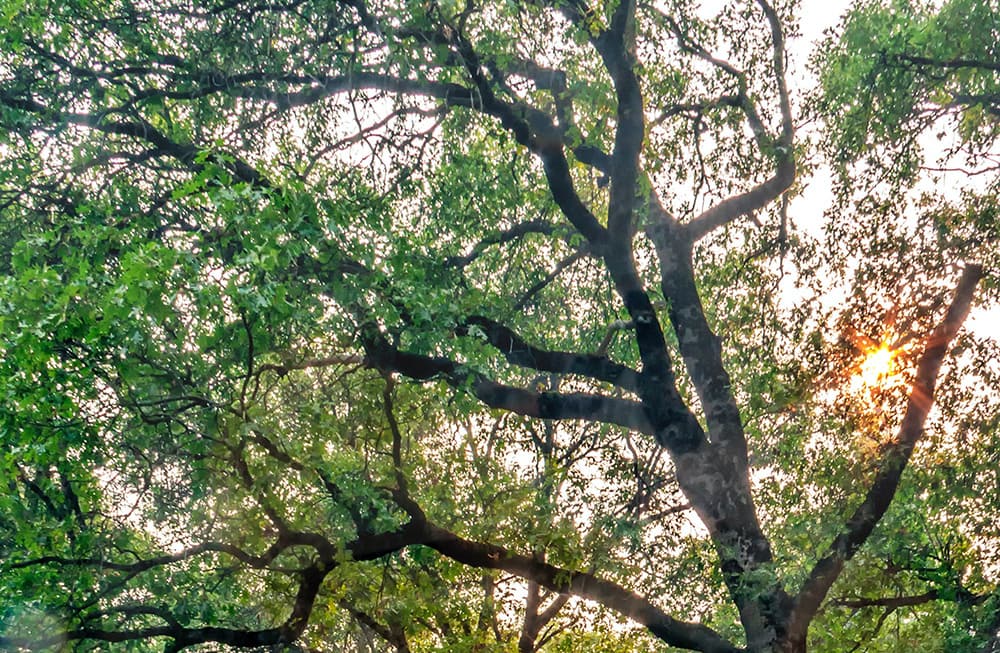
| USDA Hardiness Zones: | 3–11 |
| Sun: | Full sun |
You can find black oak trees in the northern parts of Florida. They can grow to 82 feet in height, with trunk diameters of 3–4 feet. Its leaves average 4–8 inches long and are shiny green on one side and yellowish-brown on the other. In the fall, the leaves turn orange to reddish-brown. These oaks produce oval-brown acorns, and the bark is smooth when it’s young. However, it turns rigid with a dark gray to black appearance once it reaches maturity.
2. Bluejack Oak (Quercus incana)
| USDA Hardiness Zones: | 8–10 |
| Sun: | Full sun |
The bluejack oak, also known as sandjack oak or cinnamon oak, is native to the Atlantic and Gulf coastal plains. This deciduous tree usually reaches heights of 35 feet but can reach 50 feet, which is much smaller than other oaks in the state. It has a short trunk, an asymmetrical, open crown, and the branches are crooked. It has distinctive blue-green foliage with thick black or dark-gray bark. These trees also produce acorns that provide food for many animals, including foxes and squirrels.
3. Bluff Oak (Quercus austrina)
| USDA Hardiness Zones: | 8a–9b |
| Sun: | Full sun |
The bluff oak can grow to 45 to 60 feet, with a spread of 35–50 feet. This mighty oak is easy to grow and is drought tolerant. It can grow in different types of soil that include sand, clay, and acidic. It makes for an excellent shade tree with scaly gray bark, and the deciduous lobed leaves do not change color before dropping off in the fall. It can grow in well-drained clay, acidic, sand, and loam soils.
4. Chapman Oak (Quercus chapmanii)
| USDA Hardiness Zones: | 8–10 |
| Sun: | Full sun or partial shade |
The Chapman oak can be found in dry habitats throughout most of Florida, the coastal areas of Alabama and Georgia, and the southern part of South Carolina. This oak rarely exceeds 30 feet, which is even smaller than the bluejack oak.
The deciduous leaves turn yellow or red in the fall and winter, but the top part of the leaves is dark green with yellow underneath in the summer months. It produces small acorns in pairs just under ½ inch, with a gray cup covering the top of each brown nut. It has large amounts of pollen, making it a not-so-pleasant oak for allergy sufferers.
Related Read: 11 Types of Trees in South Carolina (With Pictures)
5. Chinkapin Oak (Quercus muehlenbergii)
| USDA Hardiness Zones: | 4–7 |
| Sun: | Full sun |
This oak is found inland rather than the coastal areas. They can reach heights between 60–80 feet, with a 36-inch diameter. However, this oak usually reaches 40–50 feet.
Upon maturity, it has a broad canopy with strong branches with a moderate growth rate. The deciduous lobed leaves turn brown, orange, yellow, and red before falling off the tree in the fall. It does produce falling acorns, which means moderate clean-up if you have one in your yard, but birds and squirrels can aid in keeping them down to a minimum. It prefers clay and loam soils.
6. Laurel Oak (Quercus laurifolia)
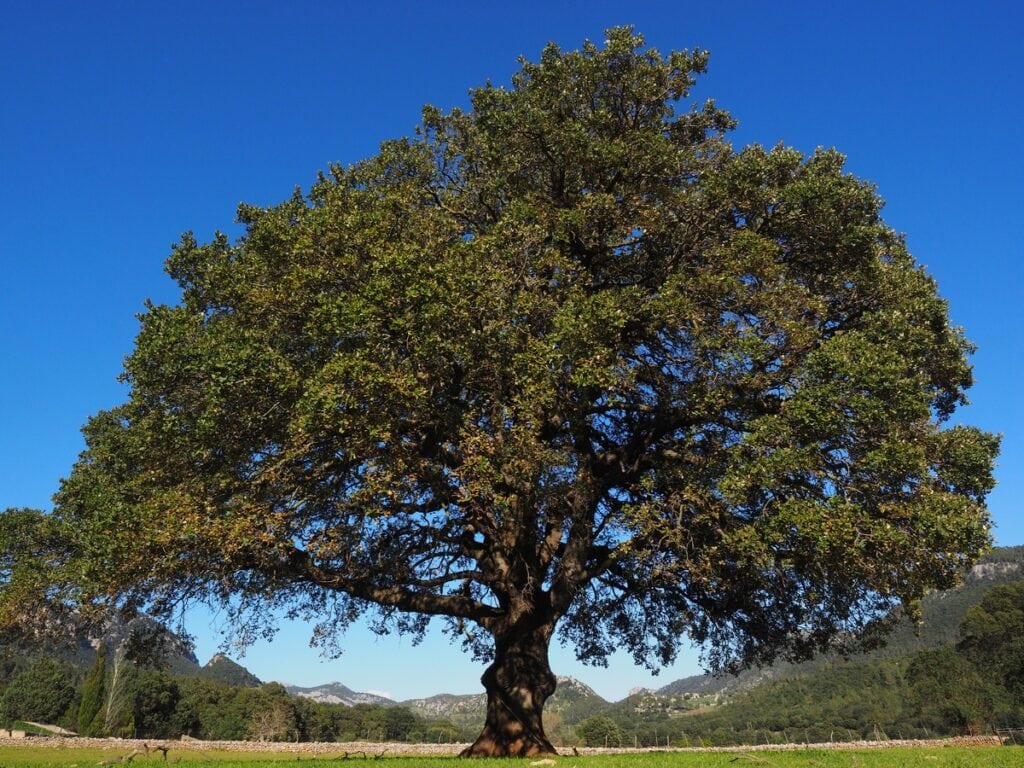
| USDA Hardiness Zones: | 7–10 |
| Sun: | Full sun or part shade |
The Laurel oak loves medium to wet, sandy, clay, loam, and acidic soils. It has a dense oval-shaped canopy and grows 40–60 feet tall. The leathery leaves are between 2–4 inches and are glossy on top and smooth on the bottom. It produces acorns, but not until the tree reaches 15–20 years old. The acorns also make for an excellent food source for wildlife. Its lifespan ranges from 75–100 years old.
7. Myrtle Oak (Quercus myrtifolia)
| USDA Hardiness Zones: | 8–10 |
| Sun: | Full sun or partial sun |
The myrtle oak can reach 40 feet tall, but the average height is 15 feet, which is yet another smaller oak that belongs to the beech family. It can also be classified as a small shrub. It prefers sandy, acidic soils and has shiny, leathery leaves that roll downward. The bark is dark gray to brown, and it has a round-topped crown. It has a high drought tolerance and produces brown acorns that mature in 18 months.
8. Overcup Oak (Quercus lyrata)
| USDA Hardiness Zones: | 5–9 |
| Sun: | Full sun or partial shade |
The overcup oak is a slow-grower and is often seen at 30–40 feet in height. However, it can reach as tall as 100 feet. It has an open crown, a twisted trunk, and a 30–40-foot spread with dark green, leathery lobed leaves. The leaves are fuzzy and white underneath and turn brown before dropping in the fall. It has reddish bark, a moderate drought tolerance, and can live on almost any soil.
9. Post Oak (Quercus stellata)
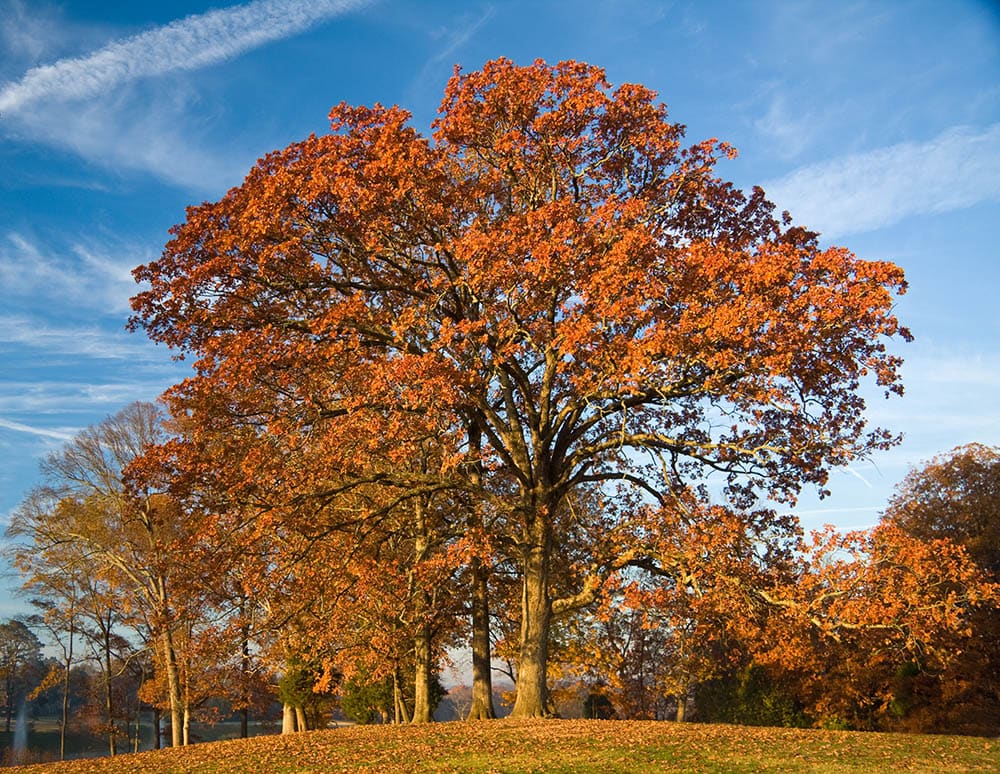
| USDA Hardiness Zones: | 5–9 |
| Sun: | Full sun |
The post oak is another slow grower that requires full sun. It prefers rich, well-drained acidic soils and is native to the eastern United States. This oak reaches between 30–50 feet high, and it has small acorns that mature in its first summer. The leathery leaves are star-shaped and sometimes turn golden brown in the fall. It provides excellent shade and is adaptable. Beware that this tree is toxic to horses.
10. Shumard Oak (Quercus shumardii)
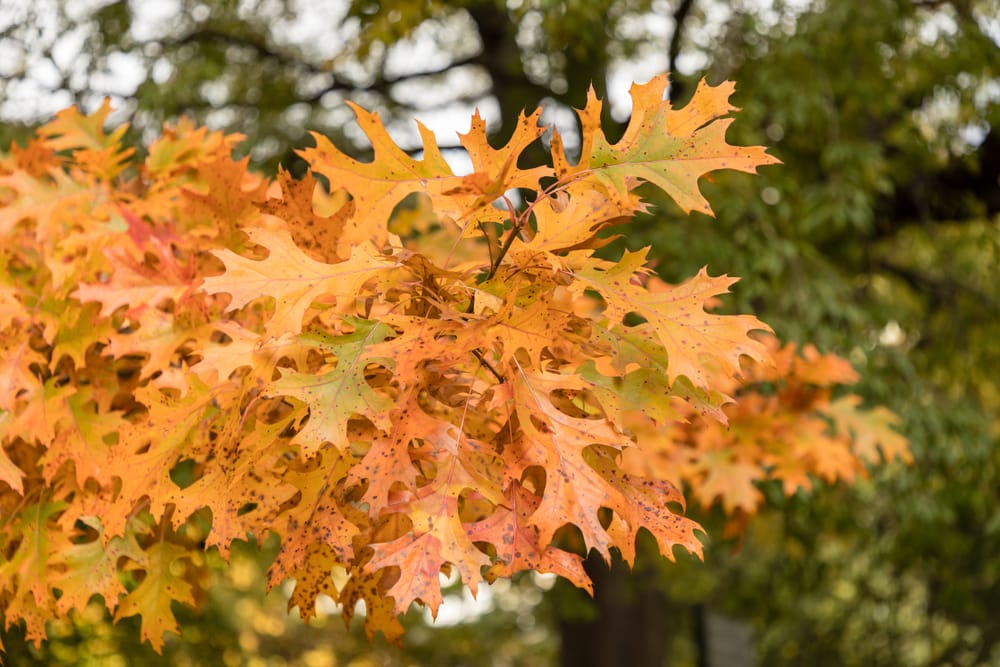
| USDA Hardiness Zones: | 5–9 |
| Sun: | Full sun |
The Shumard oak can grow to 40–60 feet in height with a 40–60-foot spread. It has a medium growth rate of 13–24 inches per year and requires at least 6 hours of direct sunlight each day. This oak prefers acidic or loamy, well-drained soils and has a slight drought tolerance. Its deciduous lobed leaves grow to 4–8 inches long, and the tree itself grows in a rounded shape. Of course, its acorns feed many types of wildlife, including squirrels, birds, and deer.
11. Southern Live Oak (Quercus virginiana)

| USDA Hardiness Zones: | 7–10 |
| Sun: | Full sun or partial sun |
Live oaks are beautiful, with long, strong branches that resemble massive arms. These oaks may have Spanish moss swaying from the extraordinary branches, which is picturesque of the Old South, which is why they are referred to as Southern live oaks. Even though the Southern live oak is the state tree of Georgia, you can find them in Florida.
Crowns on the largest Southern live oaks reach 150 feet, and the majestic branches can spread to 90 feet and often grow toward the ground. They make excellent shade trees and add tremendous value to homes, but because of their massive root systems, plant them at least 15 feet away from your dwelling. They can survive hurricane winds, and they often line streets. The oldest Southern live oak is the Seven Sisters Oak, located in Mandeville, Louisiana, which is estimated to be 1,500 years old.
12. Southern Red Oak (Quercus falcata)
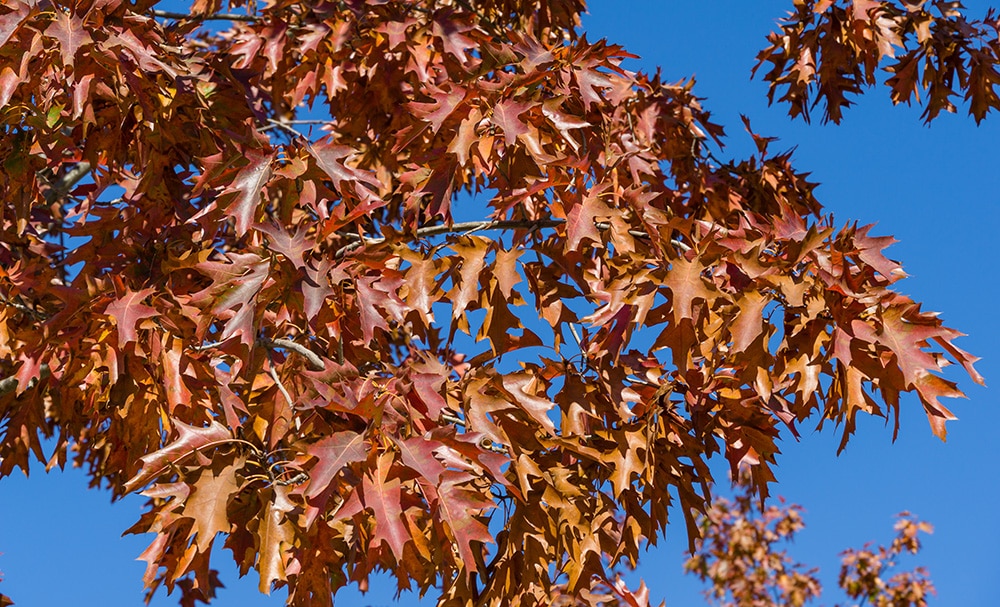
| USDA Hardiness Zones: | 6–10 |
| Sun: | Full sun or partial shade |
Southern red oaks, also called the Spanish oaks, have long, straight trunks with grayish-black bark. It can reach up to 90 feet tall and has rather large leaves that grow to 12 inches long and 6 inches wide. It requires well-drained soil and does well on acid, sandy, or loam soils. The leaves are bell-shaped and will turn brown and fall off in the fall and winter months, and the leaves may have anywhere from three to 13 lobes. The bark is scaly and dark in color, and its acorns drop from August through October.
13. Turkey Oak (Quercus laevis)
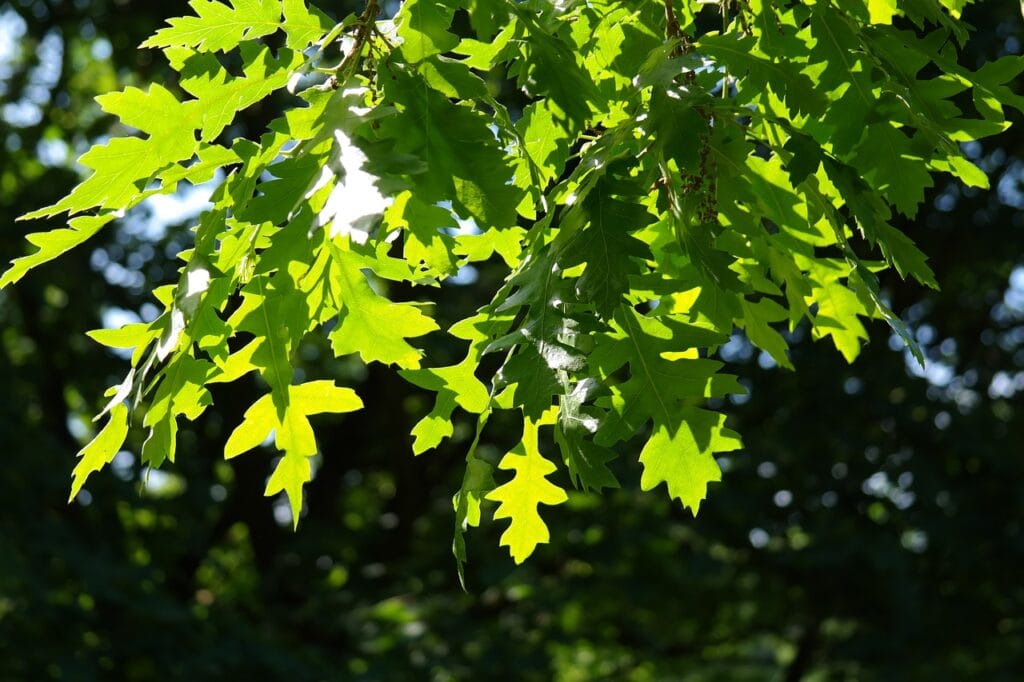
| USDA Hardiness Zones: | 6–9 |
| Sun: | Full sun or partial shade |
Turkey oaks can grow in poor, dry sandy soils of dunes, pineland, and ridges. They are small and grow fast, reaching roughly 33 feet. It has a broad and irregular-shaped crown, and the leaves have three lobes that resemble a turkey foot, hence the name. It makes for an excellent smaller shade tree, and plants that require shade can be planted underneath the tree. It cannot tolerate standing water and needs well-drained soil.
14. Water Oak (Quercus nigra)

| USDA Hardiness Zones: | 6–9 |
| Sun: | Full sun or partial shade |
Water oaks are medium-sized and serve well as shade or ornamental trees. They can grow 24 inches per year and reach heights of 50–80 feet, with a 50–80-foot spread upon maturity. Its leaves vary in shape with a dull bluish-green to dark green color in summer and a yellowish showy shade in the fall. The acorns are ½ inch in length and are enclosed at the base with a short-stalked cap. These trees have been sourced for timber and fuel since the 1600s for people in the southern states.
15. White Oak (Quercus alba)
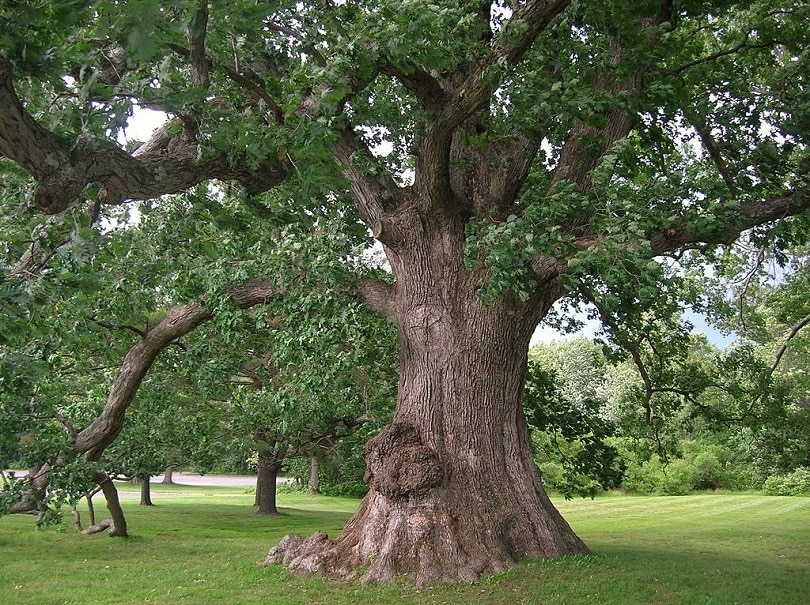
| USDA Hardiness Zones: | 3–9 |
| Sun: | Full sun |
White oaks enjoy full sun but can withstand partial shade to some degree, but only in their youth. Like the water oak, it can grow to 50–80 feet tall with the same 50–80-foot spread. It can tolerate moderate drought and prefers slightly acidic to moist, well-drained soil. The leaves turn a showy red or burgundy in the fall, which is nice to see in Florida, as many trees do not change color with the season changes. It grows in an oval-rounded shape and produces 1-inch acorns with a warty cap.
16. Willow Oak (Quercus phellos)
| USDA Hardiness Zones: | |
| Sun: | Full sun |
Willow oaks grow from 40–60 feet in height with a 30–40-foot spread upon maturity. They have a medium growth rate of 13–24 inches per year, and they require full sun. It prefers well-drained soils that are clay, loamy, and acidic. The leaves are bright green in the springtime and turn a deeper green in the summer. In the fall, the leaves turn a yellow-orange, yellow-brown, and reddish shade.
This tree grows in a pyramid shape, and it was first scientifically observed in 1723. The acorns are ½ inch long with a saucer-type cap, and the acorns attract wildlife, such as songbirds, deer, squirrels, wild turkey, and quail.
Conclusion
Many species of oak trees inhabit the state of Florida, and now you know 16 common oaks, their history, and care requirements. Oaks can add beauty to any landscape, as well as shade for those hot summer months in the Sunshine State. Remember to study the requirements of any oak you want to plant in your own yard and beware of certain root systems to prevent damage to any foundations.
Read more: 19 Types of Trees in Georgia (with Pictures)
Featured Image Credit: Helena Lopes, Pexels
Contents
